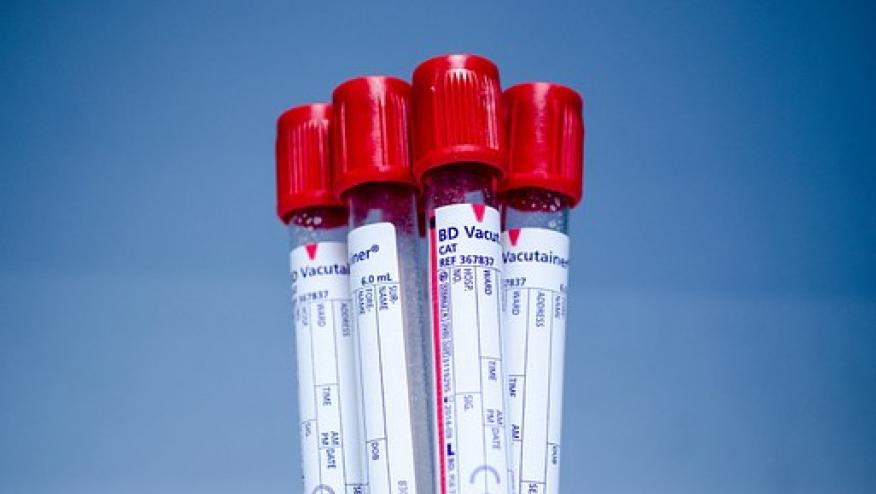Seronegativity on the Rise in RA Save

Although the overall incidence rates of rheumatoid arthritis (RA) have remained stable over recent decades, there has been a significant increase in seronegative cases, a retrospective study showed.
During the decade 2005-2014, the overall incidence rate of RA was 41 (95% CI 37-45) per 100,000, which was similar to what was seen in the decade 1985-1994, when the incidence rate was 40 (95% CI 35-46) per 100,000, and for the decade 1995-2004, when the rate was 43 (95% CI 38-48) per 100,000, according to Elena Myasoedova, MD, PhD, and colleagues of the Mayo Clinic in Rochester, Minnesota.
However, the rate of rheumatoid factor (RF) negative cases had risen from 12 (95% CI 9-15) per 100,000 in 1985-1994 and 13 (95% CI 11-16) per 100,000 in 1995-2004 to 20 (95% CI 18-23) per 100,000 in 2005-2014 (P<0.001), they reported in Annals of the Rheumatic Diseases.
Recent studies have suggested variability in the incidence of RA in different locations and populations. However, few data exist on patterns of disease according to serologic status, despite the increasing evidence that seronegative and seropositive RA may be different subtypes of disease with different risk factors.
"Understanding the epidemiology of RA by serological phenotype may provide insights into the pathophysiology of RA and implications for the course of the disease and choice of treatments, as well as healthcare use and planning," Myasoedova's group wrote.
To explore this, the researchers analyzed data from the Rochester Epidemiology Project medical records, which contain complete data on all individuals in Olmsted County, Minnesota. This database provides decades-long demographic and medical follow-up for residents of the county and represents the only population-based longitudinal RA inception cohort in the U.S.
The 1985-1994 cohort included 240 patients, the 1995-2004 cohort included 344, and the 2005-2014 cohort included 427.
In the 3 decades included in this analysis, there were no differences in age of disease onset (56 years) percentage of women (69%), or race (approximately 90% white) among patients.
There were differences, however, in rates of smoking, with never smokers rising to 57% in the latest cohort from 40% in the earliest group. The rate of obesity had increased significantly, from 24% to 41% (P<0.001), and mean BMI rose from 27 to 29.6 (P<0.001).
The prevalence of RF positivity had declined from 69% in the 2 earlier decades to 51% in the latest decade (P<0.001).
There was a significant increase in the overall rates of radiographic erosions being detected during the first year after RA diagnosis, which rose from 17% in the 1985-1994 group and 21% in the 1995-2004 group to 25% in the 2005-2014 group (P=0.048). However, this increase was only observed in the RF-negative group, increasing from 10% in the earliest decade to 25% in the latest (P=0.017).
The increases in RF-negative were seen over time for both women and men. Among women, the incidence rates for RF-negative RA rose from 15 (95% CI 11-19) per 100,000 in 1985-1994 to 26 (95% CI 22-31) per 100,000 in 2005-2014, while among men, the rates rose from 9 (95% CI 5-12) per 100,000 to 14 (95% CI 11-18) per 100,000.
At the same time, incidence rates for RF-positive disease fell, from 33 (95% CI 27-40) per 100,000 to 26 (95% CI 22-30) per 100,000 among women and from 23 (95% CI 17-30) per 100,000 to 15 (95% CI 12-19) per 100,000 among men.
One of the potential reasons for the epidemiologic shift in RA has been the decline in smoking rates. Cigarette smoking has been linked with seropositivity for RF and also anti-cyclic citrullinated peptide antibodies, and studies have shown that smoking cessation is associated with lower risks of these antibodies. "The decline in incidence of RF-positive RA in our study coincided with a significant decrease in current or former smoking and an increase in rates of never smokers in Olmsted County, Minnesota," the researchers noted.
Obesity also is likely to have contributed, with other studies having shown links between higher BMI and seronegative RA, but additional factors such as periodontitis and oral contraceptive use may also be involved.
Seronegative RA has long been considered a milder form of the disease, but in this analysis, there was an increase in severe early disease, with erosions being present in the first year among RF-negative patients. "In fact, radiographic erosions within the first year of RA disease onset in the 2005-2014 cohort were as common in RF-negative as in patients with RF-positive RA. Taken together with our findings of a rising incidence of RF-negative RA, these data suggest a need for increased awareness and timely vigilant management of RF-negative RA," the authors concluded.
A limitation of the study was the possibility of misclassification of cases.
The study was funded by the NIH.
Myasoedova and co-authors disclosed no relevant relationships with industry.










If you are a health practitioner, you may Login/Register to comment.
Due to the nature of these comment forums, only health practitioners are allowed to comment at this time.